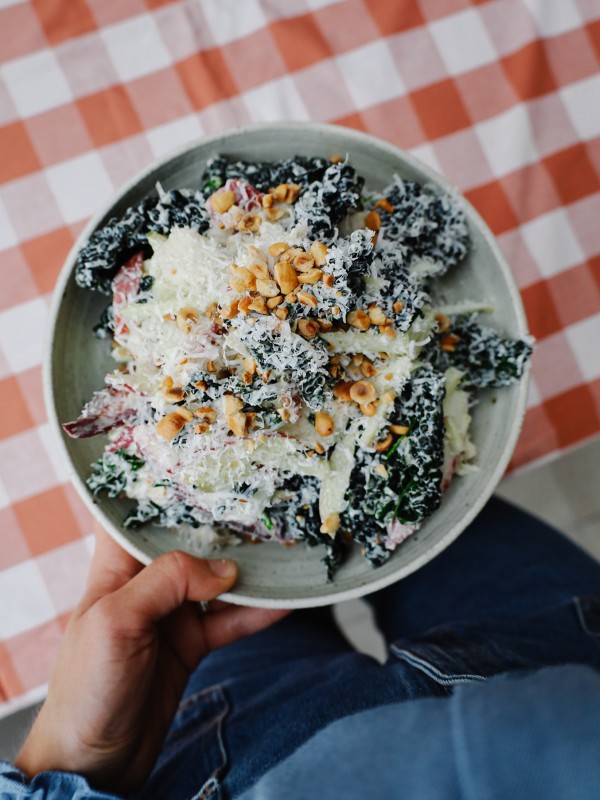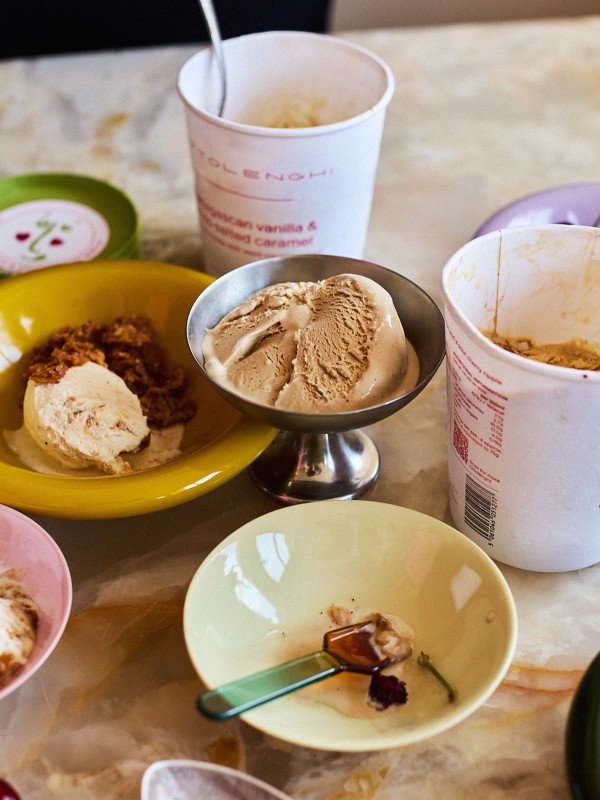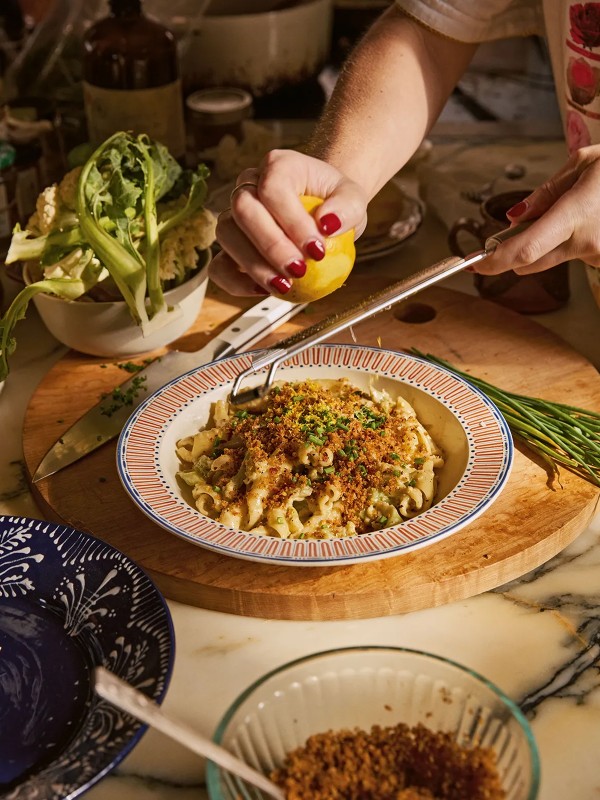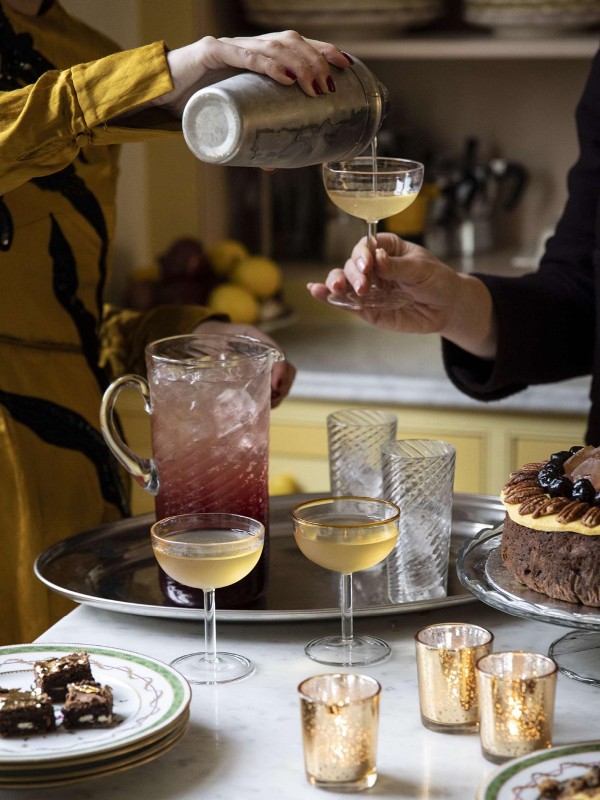A Beginner’s Guide To Icing
First thing’s first: what are the key ingredients for making icing?
“Buttercream is the most commonly used icing and is made from just butter and icing sugar. As a general rule when making buttercream, you need twice as much icing sugar to butter – for example 200g of butter would need 400g of icing sugar. Royal icing is another popular option. You just need to add a few drops of water to your icing sugar to form the right liquid consistency. There are also different types of buttercream recipes which use egg whites, known as Italian meringue buttercream. And chocolate ganache is a common icing which uses chocolate and double cream.” – Emma Barnsley, Head Baker at The Big Bake
“As with any baking, try to use the best quality ingredients available. Most icings are a simple combination of either a sugar and a fat, or a sugar and a liquid or binding agent such as egg. When working with icing sugar or fondant sugars, ensure they are well sifted first, so you don’t end up with any lumps in your icing. Colourings can be used to create different coloured icings – both powdered, gel and liquid colours are fine – alternatively, many natural colourants are now available. Then many flavourings can be added, for example essences and extracts, cocoa powder, coffee, zest or even spices.” – Heather Kaniuk, Founder of Longboys
What types of icing are there and what are they best used for?
“There are lots of different icing variations, but these are some of my favourites: royal icing is perfect for decorating biscuits and for writing on cakes. It sets very quickly, making it easier to use. Buttercream is the most commonly used icing for a sponge cake, and is a simple mix of icing sugar and butter, which makes it set when chilled. Italian meringue buttercream is a mixture of sugar, water, egg whites and butter, which combine to create a wonderfully light icing which gives a light, silky finish – perfect for cakes. You can also make Swiss meringue buttercream which uses a similar method, but you use a bain marie, or French meringue buttercream, which uses egg yolks instead of whites. Finally, fondant icing rolls out and is best used to cover celebration cakes such as Christmas cake. You can also use fondant to shape and mould into decorations.” – Emma
“Royal icing is the king of icings for biscuits. This type of icing is used for making the beautiful piped biscuits that have become popular again in the last couple of years. Sometimes fondant icing or ‘ready-to-roll’ icing is used to cover biscuits – this gives a quicker and more convenient way to decorate biscuits as you can roll and cut it to shape, which works well if you have a lot of biscuits to ice or are challenged for time. Lastly, glacé icing or “basic icing” is the simplest of options – usually made with icing sugar and water or flavoured, for example, with lemon juice or cocoa powder. Glacé icing can be used to ice a variety of items from biscuits and cupcakes to large cakes. Meanwhile, ganache is richer alternative for icing cupcakes, or even sandwiching biscuits. This is made from chocolate being melted together with cream to form a thick and luscious emulsion. Ganache can also be used to coat denser chocolate cakes and celebration cakes.” – Heather
“We use royal icing in two ways. The first is line icing, this is a thick and sturdy – think the texture of toothpaste – and is best used when piping outlines and adding detail to biscuits. The second is flood icing. We use this runnier icing to flood our biscuits, which helps to give a perfectly smooth surface to decorate.” – Biscuiteers
Can you make any substitutions?
“You can make dairy-free alternatives with ganache and buttercream by using a dairy-free spread or coconut cream. You can also substitute butter for cream cheese in buttercream icing, which is often used on carrot cakes to give it a less sweet finish. When making a basic icing using icing sugar, you can add different flavourings, or even a little drop of your favourite spirit, instead of water.” – Emma
“Butter can be easily replaced with a non-dairy alternative or with baking margarine, however standard spreadable margarines can often produce a softer and less stable icing and are prone to splitting. Try to find a non-dairy alternative with a high fat content to ensure a thicker icing. Glacé icing can be used instead of royal icing for an egg free or vegan icing to ice biscuits. And ganache can be made with vegan chocolate and dairy-free cream alternatives for a vegan ganache.” – Heather
“Powered egg white can be substituted for normal egg whites, which often suits home cooks best. You could also substitute the egg element altogether for a vegan alternative such as chickpea water.” – Biscuiteers
What equipment do you need?
“Use a free-standing mixer with a paddle attachment to make buttercream, as this gently beats the icing to give it the right consistency. A whisk attachment is best if you are making Italian meringue buttercream as you need to whisk up the egg whites (you can also do this by hand with a hand whisk it will just take a lot of arm power!) For ganache you need a saucepan to heat up the cream to pour onto the chocolate. But most basic icings you can make with just a spatula and a mixing bowl.” – Emma
“To make Italian buttercream, a sugar thermometer is required to make the meringue. A rolling pin is used to roll fondant icing, as well as cutters, cake decorating tools and crimpers, which can be used to add decoration. To pipe biscuits neatly and with precision, a piping bag and small nozzle should be used, however if you don’t have these you can always place the icing into a small sandwich or zip-lock bag and snip the corner off with scissors to make your own piping bag. When decorating cupcakes or larger cakes, a palette knife and ruler or cake scraper helps to get lovely smooth sides and clean edges. A cake turntable aids in ensuring an even coating and gives a professional finish.” – Heather
What are the differences between icing cakes and biscuits?
“The main difference is the style in which you ice. Generally, you want a cake to be loaded with filling or a large dollop of buttercream on your cupcake, whereas with a biscuit you only want a small amount of icing so that it doesn’t overpower the flavour of the biscuit. Biscuit decorating requires a lot more precision due to it being on a smaller scale – you should use more delicate piping nozzles to get intricate finishes and designs on top of biscuits, whereas with a cake you can use larger piping nozzles or cover your cake with buttercream using a pallet knife.” – Emma
“Generally speaking, icings for biscuits are designed to set and harden, whereas icings for cakes should remain soft and moist. However, many icings such as fondant icing or ganache can be used interchangeably depending on preference and what the final outcome you are looking for is.” – Heather
“Biscuits can be made in almost any shape, so when icing, follow the edge of the biscuit to guide the icing. Cakes are completely different. For instance, on our birthday cakes we ice freehand designs which can be tricky to get right. Icing the side of a cake is particularly challenging as you have to pipe the design vertically.” – Biscuiteers
How long should you wait after taking your baked goods out the oven before starting to ice them?
“As a general rule you should wait until your bake is completely cool before you start icing. Leave a celebration cake until the day after it’s been baked so it’s easier to level and carve the icing. When baking a basic sponge, cupcakes or biscuits, waiting around 90 minutes will ensure it is completely cool.” – Emma
“Biscuits and cakes must be cool before icing them, otherwise your icing will melt or run off the surface. Use a cooling rack to cool biscuits or cakes quickly.” – Heather
“Biscuits should still seem quite soft when they come out of the oven. We recommend waiting approximately 20 minutes before icing.” – Biscuiteers
Are there any pitfalls to avoid?
“Buttercream requires a lot of beating in order to get it nice and smooth and fluffy. If you don’t beat it enough, it will be more dense and harder to work with. When making a basic icing, always use small amounts of liquid at a time – it will turn before you know it! And make sure you sift the sugar of choice before using it: this ensures you get a smooth icing and nothing to clog up your piping bag when decorating.” – Emma
“Getting the consistency of glacé or royal icing is key to a successful finish on biscuits. A thicker icing is used for outlining the biscuit, while the same icing, slightly thinned down, is used to “flood” the surface area. Getting the consistency right takes a little practise – too thin and you’ll be able to see through your icing, too thick and you won’t get a smooth and glossy finish. Any small bubbles in the icing can be popped with the tip of a knife or a cocktail stick. Temperature is one of the key things to pay attention to and can also determine which icing will be best to use for cakes. For example, a ganache covered cake served on a hot summer’s day can have the tendency to weep or collapse. If the cake is going to be refrigerated overnight, an Italian buttercream is best, but the cake must be gently brought back to room temperature before being served.” – Heather
“Take time to flood your biscuits using a small amount of icing at a time – you don’t want them to overfill. It also helps to have a nice thick, consistent icing outline as any breaks in the outline may cause icing to spill over the edge of the biscuit. It’s best to wait for flood icing to dry before adding any additional detailing in line icing. We also suggest returning biscuits to the oven on the lowest temperature setting for around 30 minutes to help set the icing, so it achieves a glossy and smooth finish. Don’t worry, the biscuits won’t burn and the icing won’t melt.” – Biscuiteers
What are your favourite flavour combinations?
“I love experimenting and creating new flavour combinations that work together, using seasonal flavours depending what time of year it is. A lovely flavour is lemon and white chocolate, which has a lighter, refreshing flavour which is great while the sun is shining. A festive favourite is orange and cinnamon, which has a richer, more warming, sensation to it.” – Emma
“When it comes to cakes, lighter and fruitier combinations are preferable in summer. Strawberries with elderflower or vanilla is a personal flavour favourite for cakes and cupcakes at this time of year. Other lovely fruity combinations include lemon and blueberry, pink grapefruit and earl grey, passionfruit and orange. Chocolate works well with fruits such as berries or citrus in summer or paired with nuts or coffee in the cooler months.” – Heather
And your favourite decorations?
“It’s really fun to make small decorations from fondant icing and using piping nozzles to create different designs. A firm favourite is rose piping which gives a lovely delicate finish.” – Emma
“For biscuits, keep it simple – choose dry decorations such as sprinkles or small sweets, particularly if they’re for children. Otherwise, use different icing colours and let the cookie cutter shapes drive your imagination. For cakes, fresh fruit and edible flowers or foliage always makes for an impressive touch. Just be sure to only serve edible and unsprayed flowers and foliage.” – Heather
“We like to spray biscuits with edible metallic spray, which helps to give a real luxe feel. Multicoloured hundreds and thousands are a classic and simple way to add a bit of fun to designs, and they add an extra texture to biscuits too.” – Biscuiteers
Any final tips?
“My best tip for making buttercream is to make sure you beat your butter until it is nearly white in colour before adding your icing sugar. The longer you can beat it for the better. This allows air to be whipped into the butter which in turn makes the butter a lot lighter and airy.” – Emma
“Icing biscuits and cakes can often end up taking longer than you expect, so set aside enough time so you don’t have to rush. Splitting up the work can make things more manageable – for example bake the cakes or biscuits on one day, wrap well overnight, and ice them the next day. That way you know they’ll be completely cooled and have had time to settle, and it gives you time to relax in-between.” – Heather
“Always practise icing your design on baking paper first before decorating a biscuit. This will help you work out the design and gain confidence when piping your biscuits.” – Biscuiteers
DISCLAIMER: We endeavour to always credit the correct original source of every image we use. If you think a credit may be incorrect, please contact us at info@sheerluxe.com.






